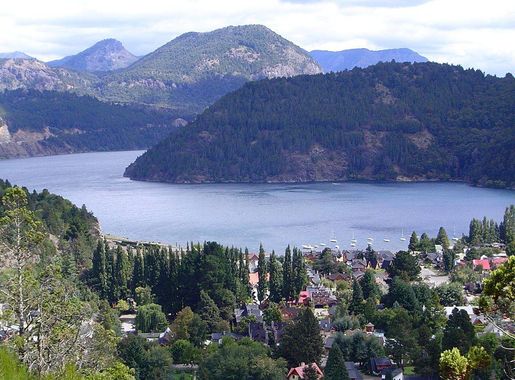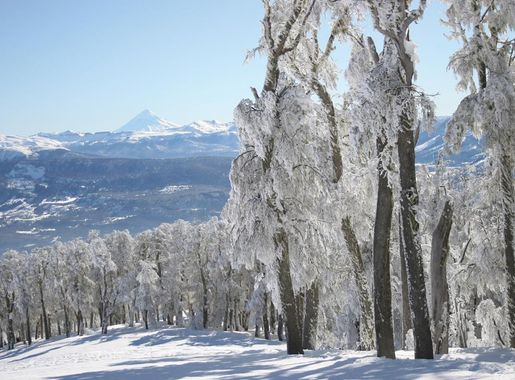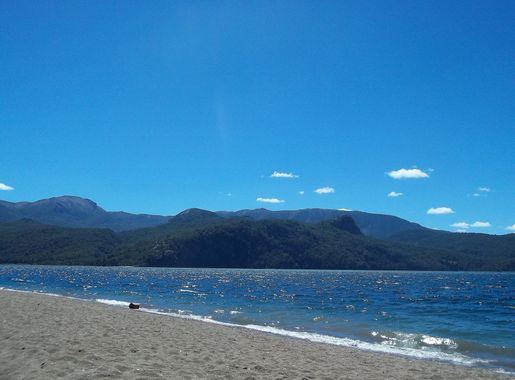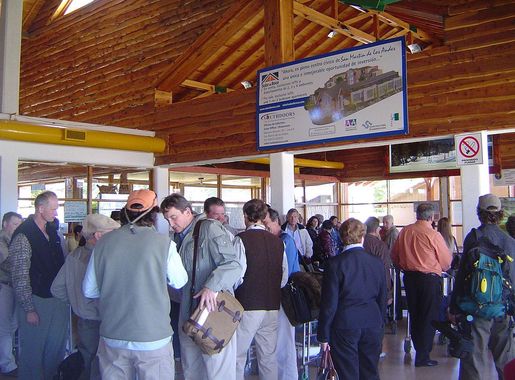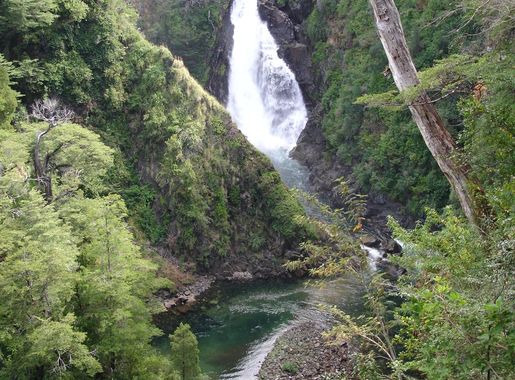
The Charm of San Martín de los Andes
Discover the enchanting beauty of San Martín de los Andes, a serene Patagonian town offering a perfect blend of outdoor adventure and tranquil relaxation.
San Martín de los Andes, nestled in the heart of Patagonia, is a picturesque town framed by the majestic Andes mountains and the serene shores of Lake Lácar. This quaint destination is known for its stunning natural beauty and tranquil atmosphere, making it a perfect escape for nature lovers and adventure seekers alike. The town itself boasts charming alpine-style architecture, with wooden cabins and cozy lodges that blend seamlessly into the surrounding landscape. Stroll through the vibrant streets, where you'll find an array of local shops, cafes, and restaurants offering delicious Patagonian cuisine. Don't miss the opportunity to try the region's famous smoked trout and artisanal chocolates. Outdoor enthusiasts will be delighted by the myriad of activities available. Hiking, mountain biking, and horseback riding are popular in the summer months, while winter transforms the area into a snowy wonderland ideal for skiing and snowboarding. The nearby Lanín National Park is a must-visit, offering breathtaking trails, lush forests, and the iconic Lanín Volcano. For a more relaxed experience, take a leisurely boat ride on Lake Lácar or visit one of the many miradores (viewpoints) for panoramic views of the town and its stunning surroundings. Whether you're seeking adventure or tranquility, San Martín de los Andes promises an unforgettable escape into nature.
Local tips in San Martín de los Andes
- Visit during the shoulder seasons (spring or fall) for fewer crowds and pleasant weather.
- Try the local delicacies, especially the smoked trout and artisanal chocolates.
- Rent a bike to explore the scenic trails around the town and Lake Lácar.
- Pack layers, as the weather can change rapidly in this mountainous region.
- Don't forget to bring cash, as some smaller shops and restaurants may not accept credit cards.
The Charm of San Martín de los Andes
San Martín de los Andes, nestled in the heart of Patagonia, is a picturesque town framed by the majestic Andes mountains and the serene shores of Lake Lácar. This quaint destination is known for its stunning natural beauty and tranquil atmosphere, making it a perfect escape for nature lovers and adventure seekers alike. The town itself boasts charming alpine-style architecture, with wooden cabins and cozy lodges that blend seamlessly into the surrounding landscape. Stroll through the vibrant streets, where you'll find an array of local shops, cafes, and restaurants offering delicious Patagonian cuisine. Don't miss the opportunity to try the region's famous smoked trout and artisanal chocolates. Outdoor enthusiasts will be delighted by the myriad of activities available. Hiking, mountain biking, and horseback riding are popular in the summer months, while winter transforms the area into a snowy wonderland ideal for skiing and snowboarding. The nearby Lanín National Park is a must-visit, offering breathtaking trails, lush forests, and the iconic Lanín Volcano. For a more relaxed experience, take a leisurely boat ride on Lake Lácar or visit one of the many miradores (viewpoints) for panoramic views of the town and its stunning surroundings. Whether you're seeking adventure or tranquility, San Martín de los Andes promises an unforgettable escape into nature.
When is the best time to go to San Martín de los Andes?
Iconic landmarks you can’t miss
San Martin Plaza
Experience the serene beauty of San Martin Plaza, a state park in Neuquén Province, perfect for nature lovers and outdoor enthusiasts.
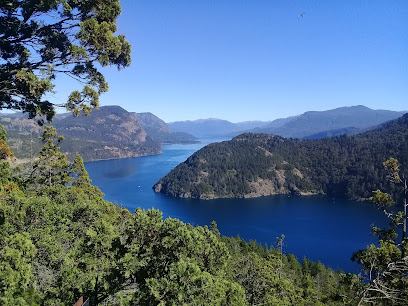
Mirador Bandurrias
Experience the stunning landscapes of Patagonia at Mirador Bandurrias, a premier observation deck in San Martín de los Andes, perfect for hiking and breathtaking views.
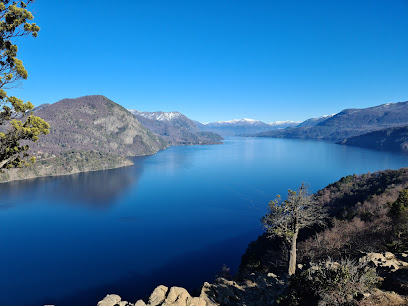
Los Ciervos
Discover Los Ciervos in San Martín de los Andes - a stunning sculpture that embodies the beauty of Argentine wildlife amidst breathtaking natural landscapes.
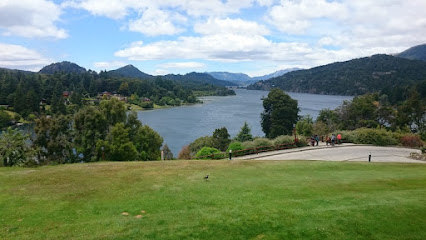
Centro de Visitantes y Museo del Parque Nacional Lanín
Discover the beauty and cultural heritage of Lanín National Park at the Centro de Visitantes y Museo, your gateway to outdoor adventures and breathtaking landscapes.

Cartel San Martín de los andes
Experience breathtaking nature and vibrant culture at Cartel San Martín de los Andes, a top tourist attraction in Argentina's Neuquén Province.
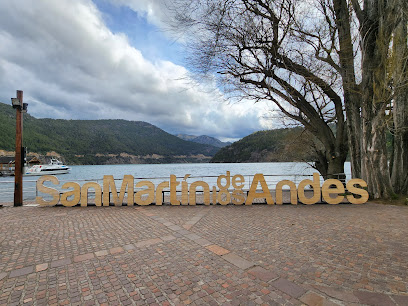
Estatua de San Martin
Discover the Estatua de San Martin, a historical landmark that beautifully combines Argentina's rich heritage with stunning natural scenery in San Martín de los Andes.
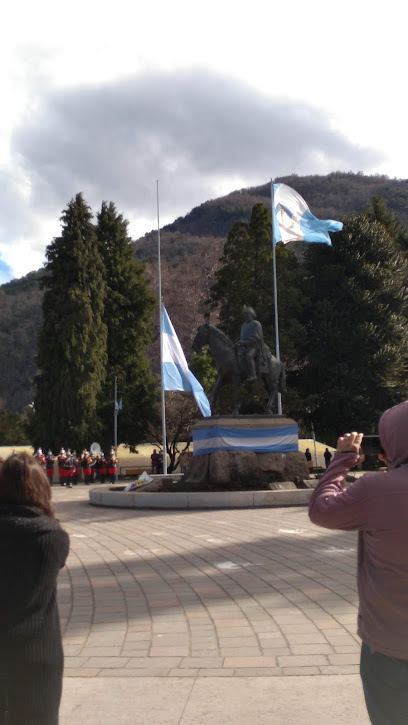
Oldest house in San Martín de los Andes
Discover the Oldest House in San Martín de los Andes, a historical landmark that reveals the rich cultural heritage of the Andes region through its architecture and artifacts.
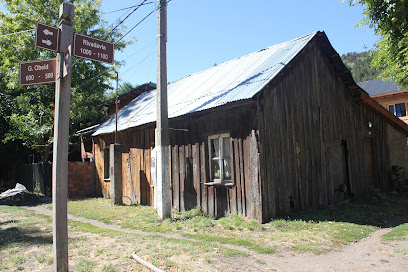
Unmissable attractions to see
La Islita
Explore La Islita: A breathtaking destination near San Martín de los Andes, perfect for hiking, relaxation, and enjoying nature's beauty.
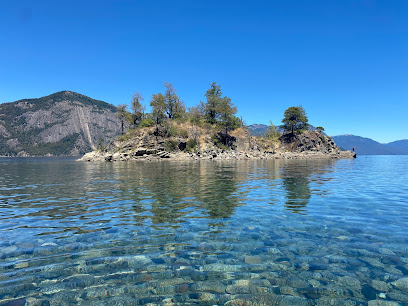
Los Ciervos
Experience the captivating sculpture of Los Ciervos in San Martín de los Andes, a serene blend of art and nature in the heart of Patagonia.
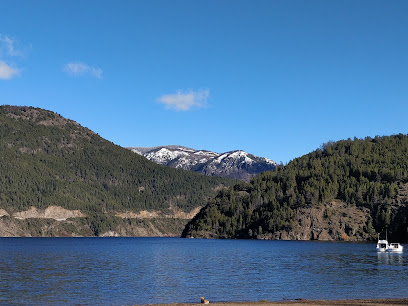
Plaza Centenario
Discover the serene beauty and vibrant culture at Plaza Centenario, the heart of San Martín de los Andes, a must-visit park for every traveler.
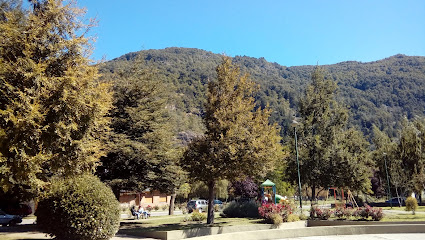
La Pastera Museo del Che
Explore the legacy of Che Guevara at La Pastera Museo del Che, a unique museum nestled in the beautiful San Martín de los Andes.
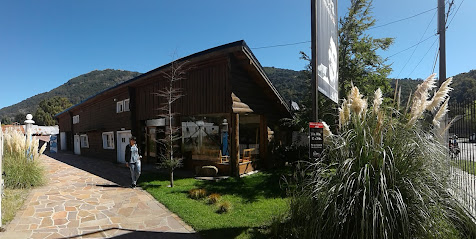
ESTANCIA MIRAMAS - Parque de Montaña
Discover the breathtaking landscapes and exquisite regional cuisine at Estancia Miramas - Parque de Montaña in San Martín de los Andes, Neuquén.

Centro de Visitantes y Museo del Parque Nacional Lanín
Discover the incredible biodiversity and cultural heritage at the Centro de Visitantes y Museo del Parque Nacional Lanín in San Martín de los Andes.
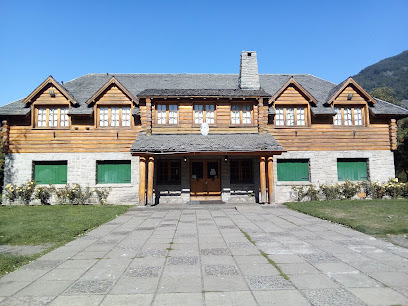
Senda a La Islita
Explore Senda a La Islita, a stunning tourist attraction in San Martín de los Andes, where nature's beauty and adventure await every traveler.
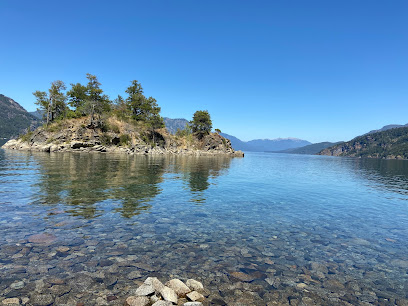
Sendero a mirador Arrayan
Explore the scenic Sendero a Mirador Arrayan in Neuquén Province, Argentina, and immerse yourself in breathtaking views and natural beauty.
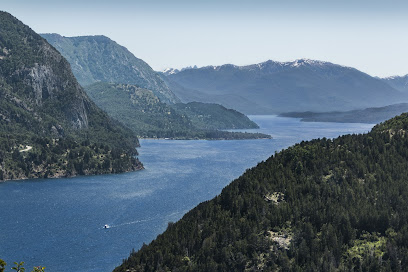
Cartel San Martín de los andes
Explore the breathtaking landscapes of Cartel San Martín de los Andes, a must-visit destination for nature lovers and adventure seekers in Argentina.
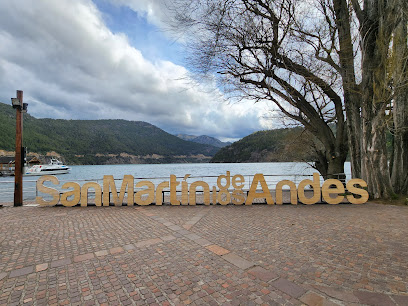
Museo Municipal Primeros Pobladores
Explore the fascinating history of San Martín de los Andes at Museo Municipal Primeros Pobladores, a charming local museum showcasing early settler heritage.

Mirador del Peñón
Discover Mirador del Peñón, the ultimate observation deck in San Martín de los Andes, with stunning views of the Andes and pristine lakes.
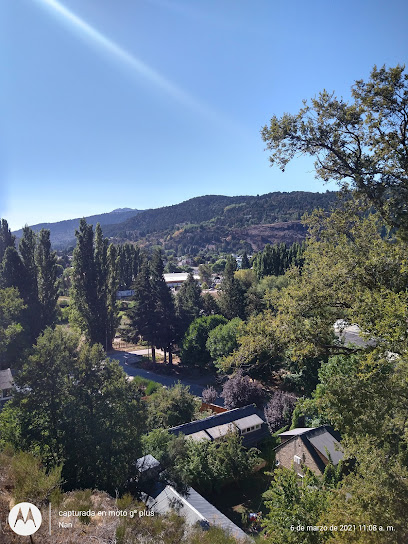
Oldest house in San Martín de los Andes
Discover the beauty and history of the Oldest House in San Martín de los Andes, a captivating landmark reflecting the rich heritage of Patagonia.
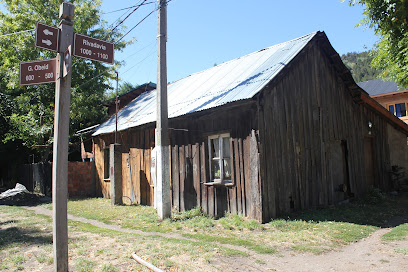
Essential places to dine
Parrilla Patagonia Piscis
Experience authentic Argentinian barbecue at Parrilla Patagonia Piscis in San Martín de los Andes - where flavor meets tradition.
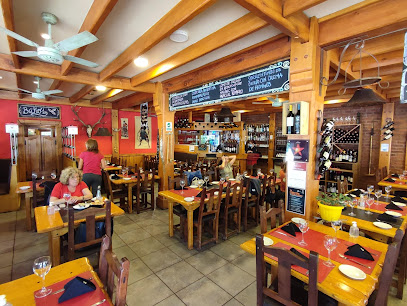
La Nueva Barra
Discover authentic Argentine cuisine at La Nueva Barra in San Martín de los Andes - a culinary experience amidst breathtaking landscapes.
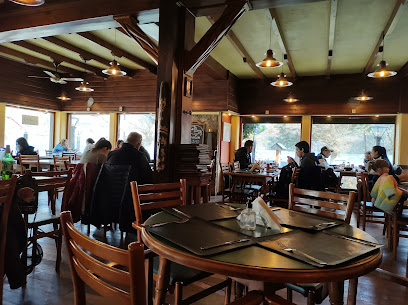
Ulises
Experience authentic Argentinian flavors at Ulises, where every dish tells a story amidst stunning Patagonian landscapes.
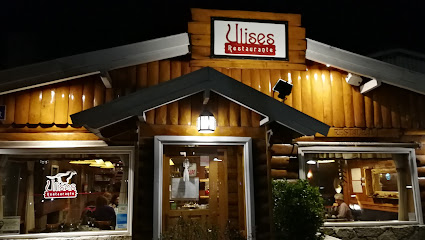
Doña Quela
Experience authentic Argentinian cuisine at Doña Quela in San Martín de los Andes - a must-visit for food lovers seeking local flavors.
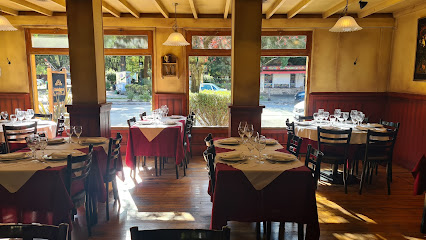
Ku de los Andes
Experience authentic Argentinian cuisine at Ku de los Andes in scenic San Martín de los Andes—where flavors meet breathtaking views.
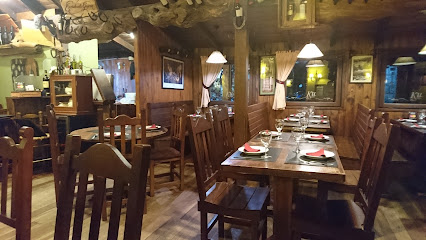
La Costa del Pueblo
Experience authentic Argentine cuisine at La Costa del Pueblo while enjoying breathtaking views of San Martín de los Andes.
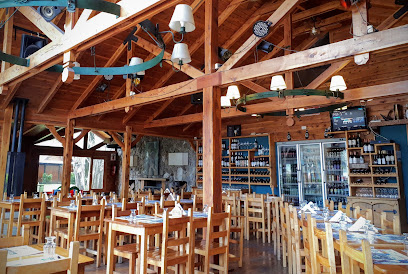
Restaurant Porthos
Experience authentic Argentine cuisine at Restaurant Porthos in San Martín de los Andes—where local flavors meet breathtaking mountain views.
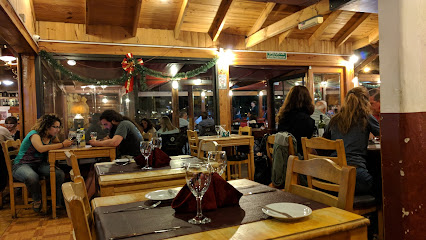
La Casona Restaurant
Experience authentic Argentine cuisine at La Casona Restaurant in San Martín de los Andes, where local flavors meet breathtaking mountain views.
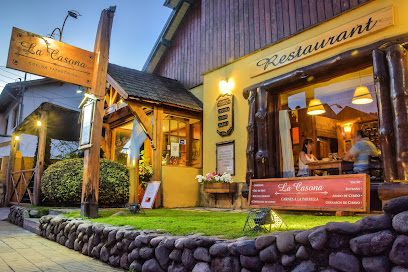
Don Florencio Restaurant
Experience authentic Argentinian cuisine at Don Florencio Restaurant in San Martín de los Andes - where every meal is a celebration of flavor.
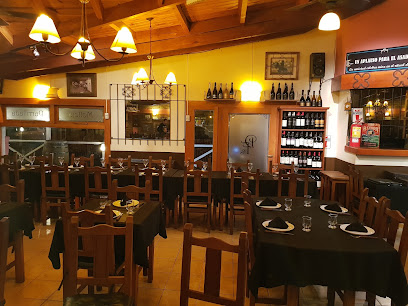
Posta Criolla
Discover authentic Argentine flavors at Posta Criolla in San Martín de los Andes - a culinary haven amidst stunning landscapes.
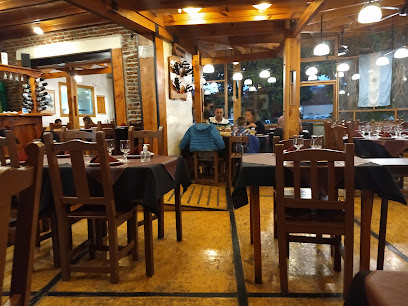
La Tasca
Experience authentic Argentine cuisine at La Tasca in San Martín de los Andes, where every meal tells a story and every flavor captivates.
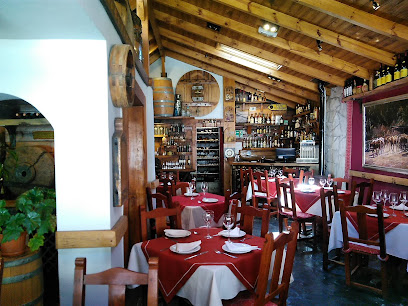
Torino Bar & Bistró
Discover exceptional Argentine cuisine at Torino Bar & Bistró in San Martín de los Andes—where every dish tells a story.
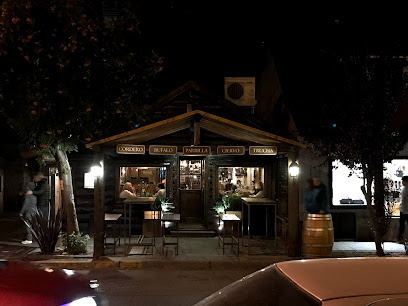
El Abasto Restaurant
Discover authentic Argentinian flavors at El Abasto Restaurant in San Martín de los Andes - a culinary delight amidst breathtaking mountain scenery.
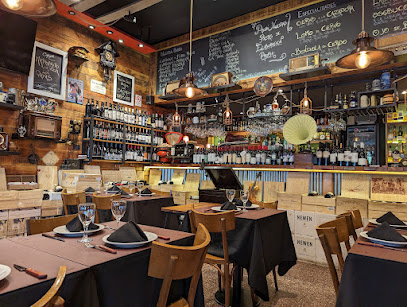
Pulgarcito
Experience the authentic flavors of Argentina at Pulgarcito in San Martín de los Andes – where every meal is a celebration.
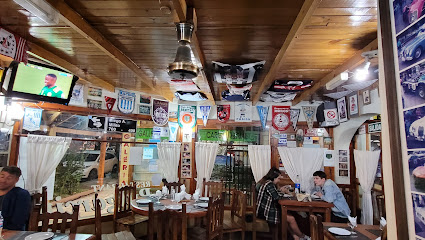
La Fondue de Betty
Experience authentic Swiss cuisine at La Fondue de Betty in San Martín de los Andes, where fondue dreams come true amidst breathtaking scenery.
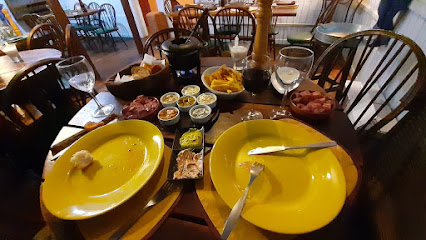
Markets, malls and hidden boutiques
Mamuschka
Discover the enchanting world of artisanal chocolates at Mamuschka, San Martín de los Andes, where every bite is a taste of paradise.
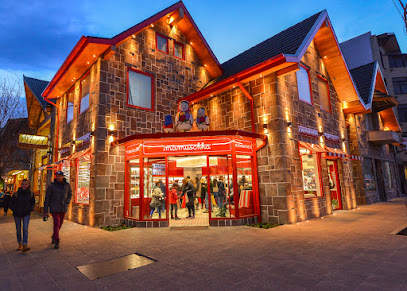
Mamusia
Discover the enchanting flavors of Mamusia, a chocolate and ice cream shop in San Martín de los Andes that delights every visitor with its artisanal treats.
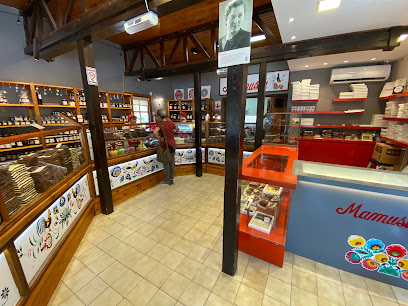
Riche Patagonia
Experience the ultimate chocolate indulgence at Riche Patagonia, a charming cafe in San Martín de los Andes, where every bite tells a story of flavor and passion.
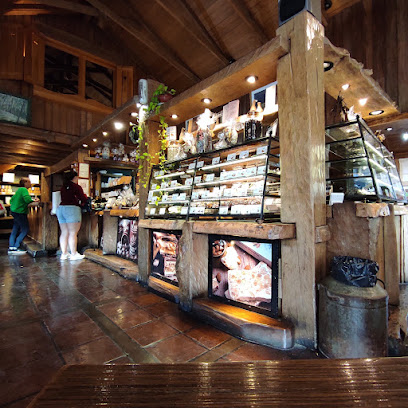
Unser Traum
Discover the heavenly delights of Unser Traum, a charming bakery and cake shop in San Martín de los Andes, where every bite is a sweet escape.
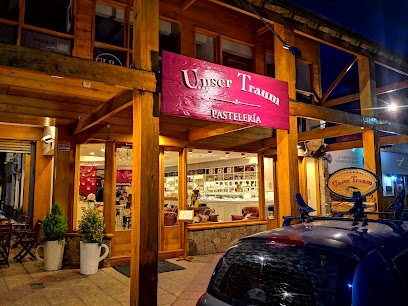
The Old Village - Chocolate Artesanal
Discover artisanal chocolates that celebrate the flavors of the Andes at The Old Village in San Martín de los Andes, Neuquén.
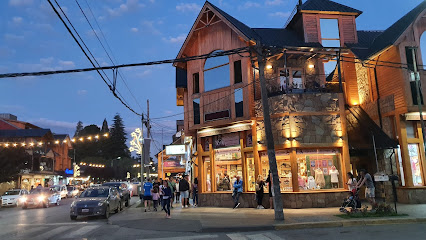
Austria SkiRanch
Experience the thrill of winter sports at Austria SkiRanch, your ultimate destination for skiing gear and outdoor adventure in San Martín de los Andes.

Aquaterra
Discover top-quality sportswear at Aquaterra in San Martín de los Andes, your go-to store for outdoor adventures in Patagonia.
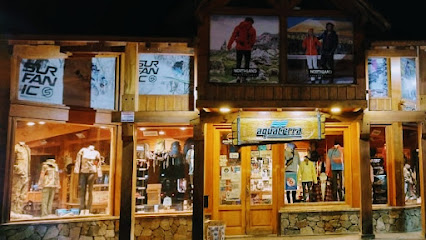
la Oveja Negra Artesanías, Tejidos.
Explore the rich heritage of Argentine craftsmanship at la Oveja Negra Artesanías, a charming craft store in San Martín de los Andes, perfect for unique souvenirs.
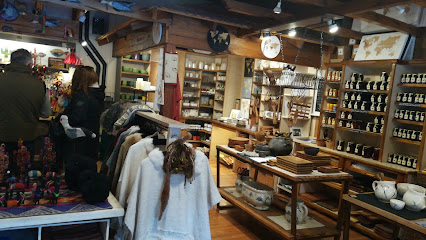
Los Lagos
Explore Los Lagos, a delightful toy store in San Martín de los Andes, offering a unique selection of toys and games for all ages amidst stunning mountain views.
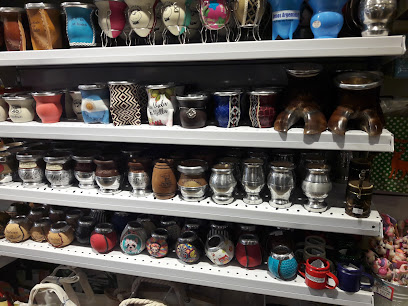
Adventure Store
Explore the great outdoors with top-notch ski rentals and bicycle services at Adventure Store in San Martín de los Andes, your adventure starts here.
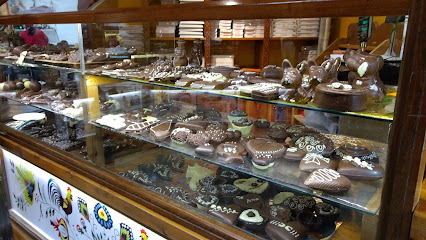
Los Andes Roots
Explore the beauty of Patagonia with high-quality gear from Los Andes Roots, your ultimate outdoor clothing and equipment shop in San Martín de los Andes.
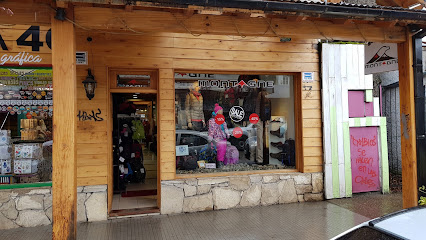
Prüne San Martin de los Andes
Explore Prüne in San Martin de los Andes for exquisite fashion accessories that reflect the beauty and elegance of Patagonia.
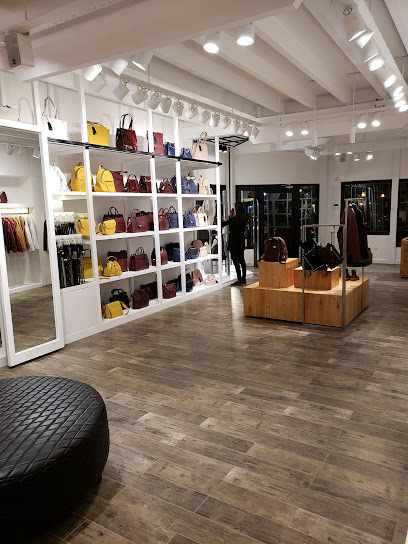
PLUM Tejidos
Explore PLUM Tejidos, the best knitwear manufacturer in San Martín de los Andes, offering exquisite handcrafted garments and authentic Patagonian fashion.

RIP CURL SAN MARTIN DE LOS ANDES
Explore the great outdoors with top-quality gear from Rip Curl in San Martin de los Andes, Patagonia's adventure hub.

Legacy San Martin de los Andes
Discover stylish apparel and unique fashion finds at Legacy San Martin de los Andes, where Patagonia's spirit meets chic clothing.
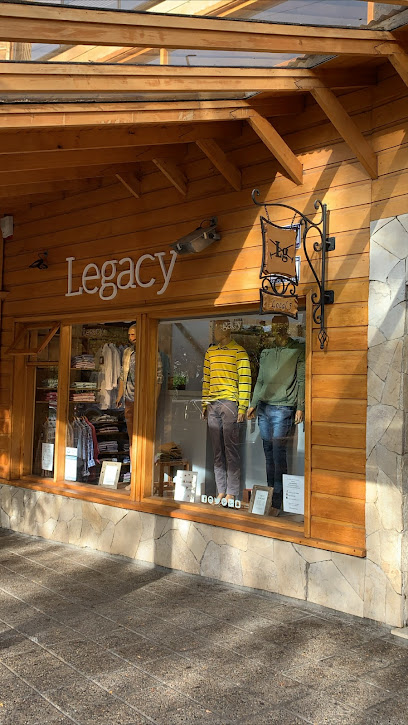
Essential bars & hidden hideouts
Dublin South Pub
Experience the vibrant atmosphere of Dublin South Pub in San Martín de los Andes, where delicious food meets a cozy ambiance and friendly locals.
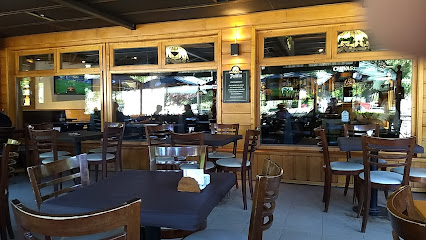
Fassbier Cervecería
Discover the lively Fassbier Cervecería, where local brews and delicious fast food come together in the heart of San Martín de los Andes.
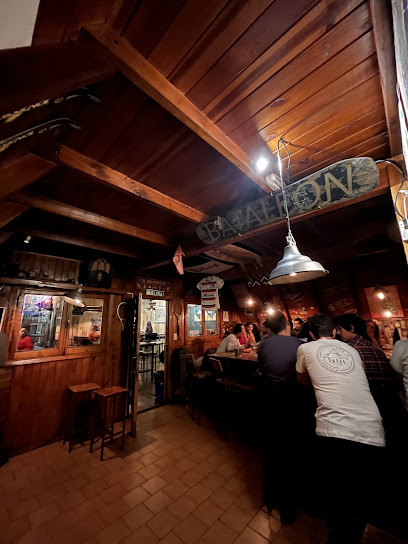
Tijuana Resto-Bar villegas 961
Experience the vibrant flavors of Argentine cuisine in a modern gastropub setting at Tijuana Resto-Bar in San Martín de los Andes.
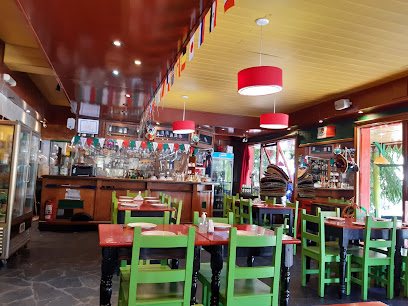
Tío Paco.
Discover the cozy charm of Tío Paco in San Martín de los Andes, where delicious Patagonian cuisine meets a warm, inviting atmosphere.
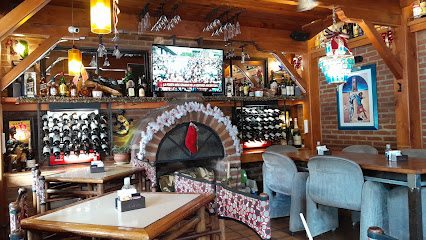
Torino Bar & Bistró
Experience exquisite dining at Torino Bar & Bistró, where local flavors meet international cuisine in the scenic San Martín de los Andes.
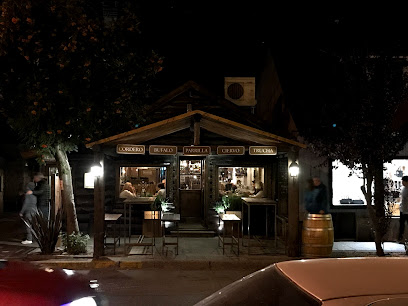
Little Coffee
Experience the heartwarming ambiance and local flavors at Little Coffee, the perfect café and bar in San Martín de los Andes.

Clover Cervecería
Experience the vibrant atmosphere and craft beer selection at Clover Cervecería in San Martín de los Andes, where local culture meets great drinks.
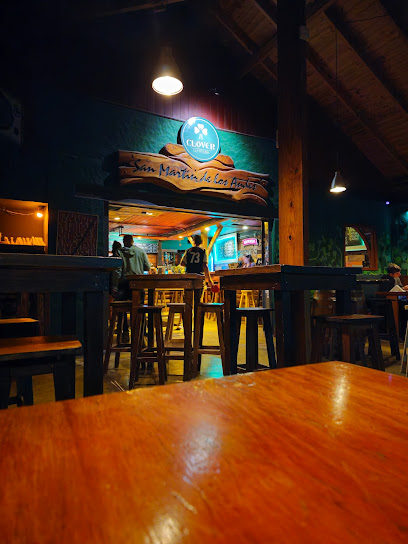
Mesta Bar SMA
Experience the best of local craft beers and hearty meals at Mesta Bar SMA, a vibrant brewpub in the heart of San Martín de los Andes.
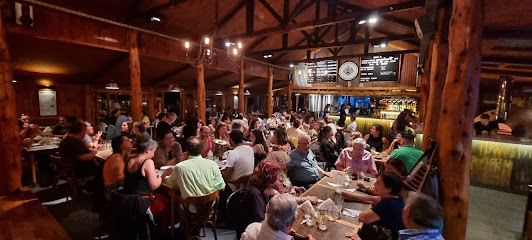
Jabalí
Discover Jabalí, the perfect bar for experiencing local flavors and vibrant nightlife in San Martín de los Andes.
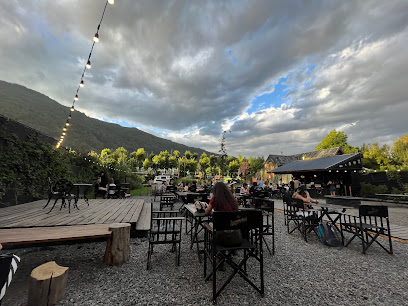
Bunker resto bar
Discover the vibrant atmosphere of Bunker Resto Bar in San Martín de los Andes, where great food and drinks meet stunning mountain views.
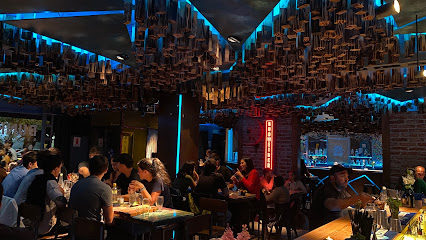
WILD RestoBar
Discover the vibrant flavors of local cuisine at WILD RestoBar, a lively gastropub in the heart of San Martín de los Andes.
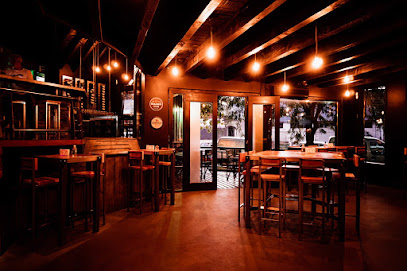
Parador Slonjah
Experience the vibrant atmosphere and stunning views at Parador Slonjah, a must-visit bar in San Martín de los Andes.
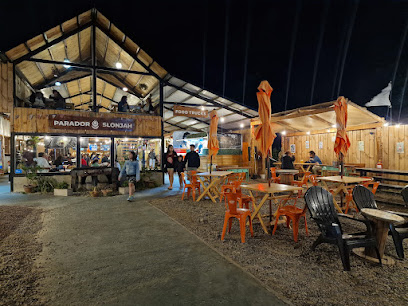
La Gale SMA
Discover La Gale SMA, a vibrant beer hall in San Martín de los Andes, where local brews meet a warm, inviting atmosphere for unforgettable experiences.
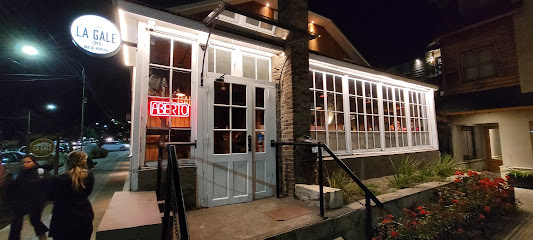
La Fraternidad - Vermuteria
Experience the vibrant atmosphere of La Fraternidad in San Martín de los Andes, where exquisite vermouth cocktails meet local culture and charm.

Kraft Brewers Point SMA
Experience the best of local craft beers at Kraft Brewers Point SMA in the heart of San Martín de los Andes, a haven for beer lovers.
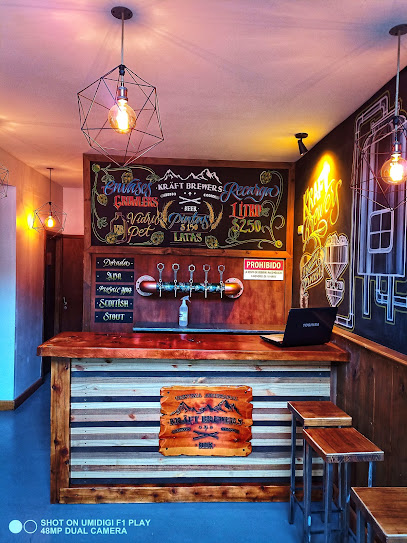
Local Phrases about San Martín de los Andes
-
- HelloHola
[oh-lah] - GoodbyeChau
[chow] - YesSí
[see] - NoNo
[noh] - Please/You're welcomePor favor/De nada
[pohr fah-vohr/de nah-dah] - Thank youGracias
[grah-syahs] - Excuse me/SorryDisculpe/Perdón
[dee-skool-peh/pehr-dohn] - How are you?¿Cómo estás?
[koh-moh ehs-tahs] - Fine. And you?Bien. ¿Y tú?
[byen. ee too] - Do you speak English?¿Hablas inglés?
[ah-blahs een-glehs] - I don't understandNo entiendo
[noh ehn-tyen-doh]
- HelloHola
-
- I'd like to see the menu, pleaseMe gustaría ver el menú, por favor
[meh goos-tah-ree-ah behr ehl meh-noo, pohr fah-vohr] - I don't eat meatNo como carne
[noh koh-moh kahr-neh] - Cheers!¡Salud!
[sah-lood] - I would like to pay, pleaseMe gustaría pagar, por favor
[meh goos-tah-ree-ah pah-gahr, pohr fah-vohr]
- I'd like to see the menu, pleaseMe gustaría ver el menú, por favor
-
- Help!¡Ayuda!
[ah-yoo-dah] - Go away!¡Vete!
[veh-teh] - Call the Police!¡Llame a la policía!
[yah-meh ah lah poh-lee-see-ah] - Call a doctor!¡Llame a un médico!
[yah-meh ah oon meh-dee-koh] - I'm lostEstoy perdido
[ehs-toy pehr-dee-doh] - I'm illEstoy enfermo
[ehs-toy ehn-fehr-moh]
- Help!¡Ayuda!
-
- I'd like to buy...Quiero comprar...
[kyeh-roh kohm-prahr] - I'm just lookingSolo estoy mirando
[soh-loh ehs-toy meer-ahn-doh] - How much is it?¿Cuánto cuesta?
[kwan-to kwehs-tah] - That's too expensiveEs demasiado caro
[ehs deh-mah-syah-doh kah-roh] - Can you lower the price?¿Puede bajar el precio?
[pweh-deh bah-hahr ehl pree-syoh]
- I'd like to buy...Quiero comprar...
-
- What time is it?¿Qué hora es?
[keh oh-rah ehs] - It's one o'clockEs la una
[ehs lah oo-nah] - Half past (10)Las diez y media
[lahs dyehs ee meh-dee-ah] - MorningMañana
[mah-nyah-nah] - AfternoonTarde
[tahr-deh] - EveningNoche
[noh-cheh] - YesterdayAyer
[ah-yehr] - TodayHoy
[oy] - TomorrowMañana
[mah-nyah-nah] - 1Uno
[oo-noh] - 2Dos
[dohs] - 3Tres
[trehs] - 4Cuatro
[kwah-troh] - 5Cinco
[seen-koh] - 6Seis
[seys] - 7Siete
[syeh-teh] - 8Ocho
[oh-choh] - 9Nueve
[nweh-veh] - 10Diez
[dyehs]
- What time is it?¿Qué hora es?
-
- Where's a/the...?¿Dónde está...?
[dohn-deh ehs-tah] - What's the address?¿Cuál es la dirección?
[kwal ehs lah dee-rek-syohn] - Can you show me (on the map)?¿Puede mostrarme (en el mapa)?
[pweh-deh mohs-trar-meh (ehn ehl mah-pah)] - When's the next (bus)?¿Cuándo es el próximo (colectivo)?
[kwan-doh ehs ehl proh-ksy-moh (koh-lehk-tee-voh)] - A ticket (to ....)Un boleto (a ...)
[oon boh-leh-toh (ah ...)]
- Where's a/the...?¿Dónde está...?
History of San Martín de los Andes
-
San Martín de los Andes was founded on February 4, 1898, by Colonel Celestino Pérez. It was initially established as a strategic military outpost to secure the Argentine frontier and promote settlement in the region.
-
Before the arrival of European settlers, the region was inhabited by the Mapuche people. Their culture and traditions have significantly influenced the local customs and heritage of San Martín de los Andes. The Mapuche language, Mapudungun, is still spoken by some community members.
-
Lanín National Park was established in 1937 to protect the diverse ecosystems and the iconic Lanín Volcano. The park covers an area of over 1,500 square miles and is a major draw for tourists, offering activities such as hiking, fishing, and wildlife observation.
-
European settlers, primarily of German, Austrian, and Swiss descent, began to arrive in the early 20th century. They contributed to the development of agriculture, dairy farming, and the timber industry, shaping the economic landscape of the region.
-
The construction of Route 40, one of Argentina's most famous highways, played a crucial role in connecting San Martín de los Andes with other parts of the country. This enhanced access significantly boosted tourism and commerce in the area.
-
San Martín de los Andes hosts various cultural festivals throughout the year, including the National Chocolate Festival and the Snow Festival. These events celebrate the local heritage and attract visitors from all over Argentina and beyond.
-
In recent years, San Martín de los Andes has been at the forefront of environmental conservation efforts. Local organizations work tirelessly to protect the natural beauty of the region, promoting sustainable tourism and conservation of native flora and fauna.
-
The town's architecture reflects its diverse history, featuring a blend of European alpine styles and traditional Patagonian designs. Notable buildings include the Chapel of San José and the local civic center, both of which showcase the town's unique architectural heritage.
-
Tourism has become the backbone of San Martín de los Andes' economy. The town's scenic beauty, outdoor activities, and cultural experiences attract thousands of visitors annually, providing a significant boost to the local economy.
San Martín de los Andes Essentials
-
San Martín de los Andes is located in the Neuquén Province of Argentina. The nearest airport is Aviador Carlos Campos Airport (CPC), also known as Chapelco Airport, which is approximately 20 kilometers away from the town center. Direct flights are available from Buenos Aires. Alternatively, you can fly into San Carlos de Bariloche Airport (BRC) and take a scenic 3-hour drive or bus ride to San Martín de los Andes. Long-distance buses from major cities like Buenos Aires, Neuquén, and Bariloche also connect to San Martín de los Andes.
-
San Martín de los Andes is a walkable town, but for longer distances, there are several options available. Taxis are readily available and can be hailed on the street or booked via phone. Car rentals are another convenient option if you plan to explore the surrounding areas, such as Lanín National Park. Buses operate within the town and to nearby destinations. Cycling is also popular, with bike rentals available for those who prefer an eco-friendly mode of transport.
-
The official currency in Argentina is the Argentine Peso (ARS). Credit cards are accepted in most hotels, restaurants, and shops in San Martín de los Andes, but it is advisable to carry some cash for smaller establishments and rural areas. ATMs are available in the town center, but be aware of potential withdrawal limits and fees. It's a good idea to exchange some money before arriving or use ATMs upon arrival for convenience.
-
San Martín de los Andes is generally safe for tourists, but standard precautions are always advisable. Avoid walking alone at night in unfamiliar areas and keep an eye on your belongings in crowded places. While the town does not have specific high-crime areas targeting tourists, it's always best to stay vigilant and aware of your surroundings. Petty theft can occur, so use hotel safes to store valuables.
-
In case of emergency, dial 107 for medical assistance, 100 for fire emergencies, and 101 for police assistance. The local hospital, Hospital Dr. Ramón Carrillo, is equipped to handle most medical emergencies. Pharmacies are available in town for minor health issues. It is recommended to have travel insurance that covers medical emergencies. For more extensive medical care, the city of Neuquén has larger medical facilities.
-
Fashion: Do dress in layers, as the weather can change rapidly. Avoid wearing overly flashy or revealing clothing. Religion: Do show respect when visiting religious sites, even though there are no strict dress codes. Public Transport: Do have small change for bus fares and be respectful to fellow passengers. Don't play loud music or eat on public transport. Greetings: Do greet people with a handshake and a smile. Using 'Hola' (Hello) and 'Gracias' (Thank you) is appreciated. Eating & Drinking: Do try local dishes like 'asado' (barbecue) and 'empanadas.' Don't leave a tip out of the bill; instead, leave it on the table or hand it directly to the server.
-
To experience San Martín de los Andes like a local, visit the Feria Artesanal, an artisan market where you can buy handmade crafts and local products. Engage with locals, as they are generally friendly and willing to share stories about the town's history and culture. Don't miss the opportunity to explore Lanín National Park, home to the Lanín Volcano and numerous hiking trails. For a unique experience, take a boat tour on Lake Lácar or enjoy a day of fishing in the pristine rivers and lakes surrounding the town.
Nearby Cities to San Martín de los Andes
-
Things To Do in San Carlos de Bariloche
-
Things To Do in Pucon
-
Things To Do in Osorno
-
Things To Do in Valdivia
-
Things To Do in Puerto Varas
-
Things To Do in Temuco
-
Things To Do in Concepción
-
Things To Do in Curicó
-
Things To Do in Rancagua
-
Things To Do in San Rafael
-
Things To Do in Santiago
-
Things To Do in Valparaíso
-
Things To Do in Viña del Mar
-
Things To Do in Mendoza
-
Things To Do in San Juan

